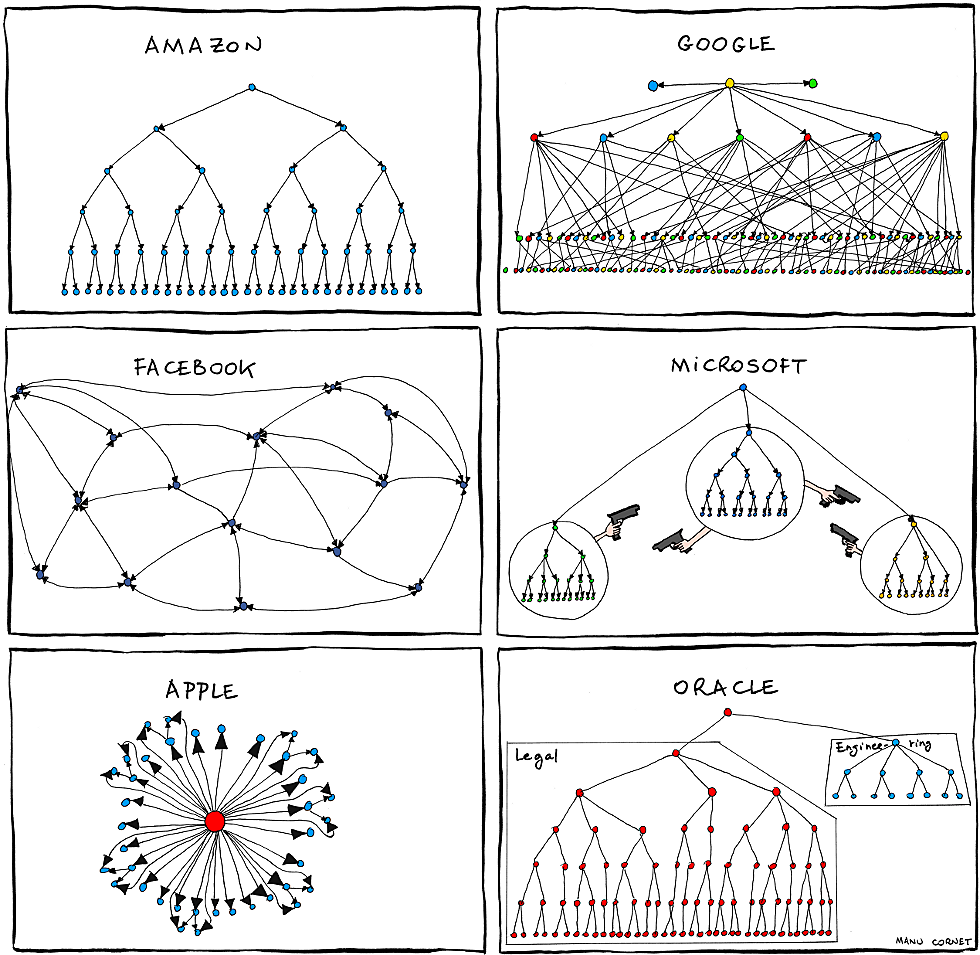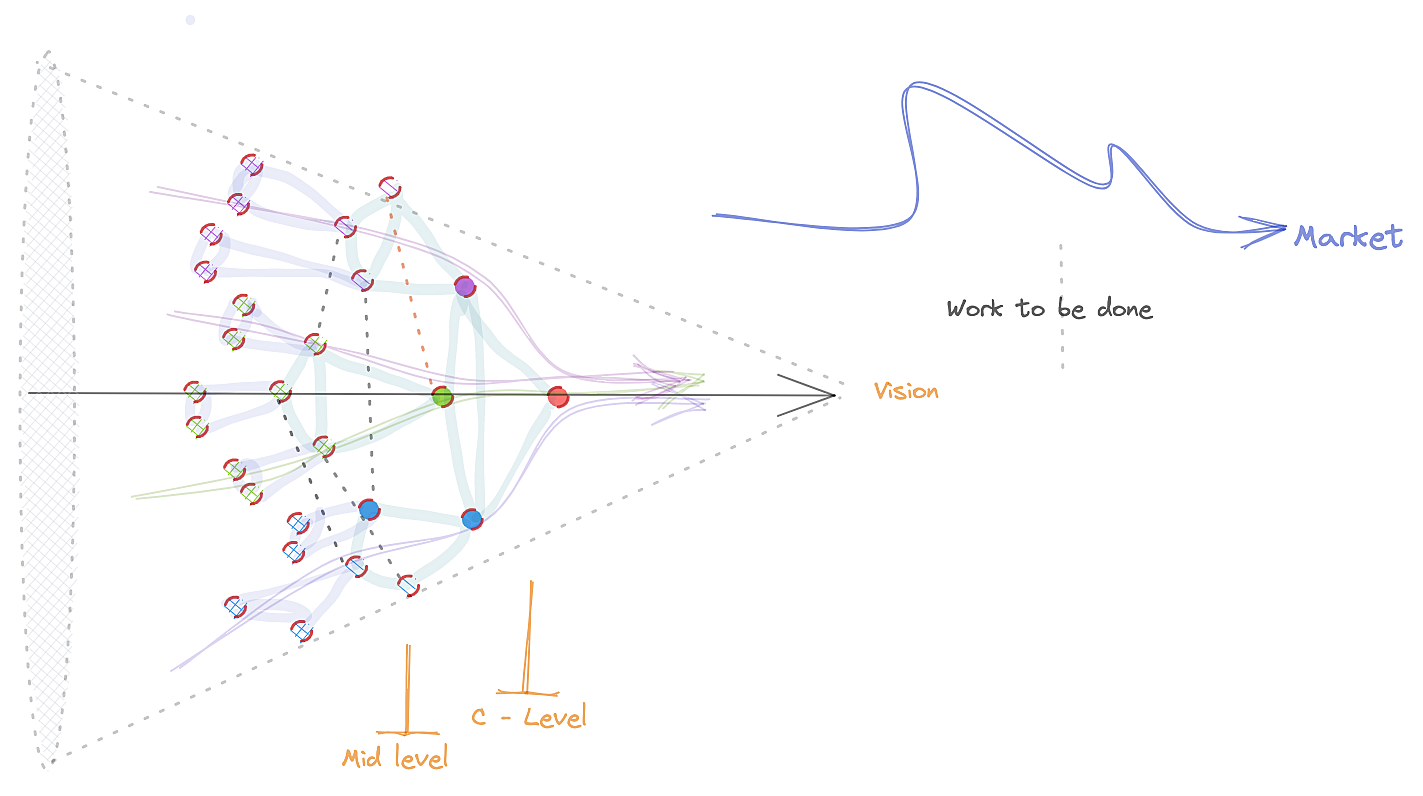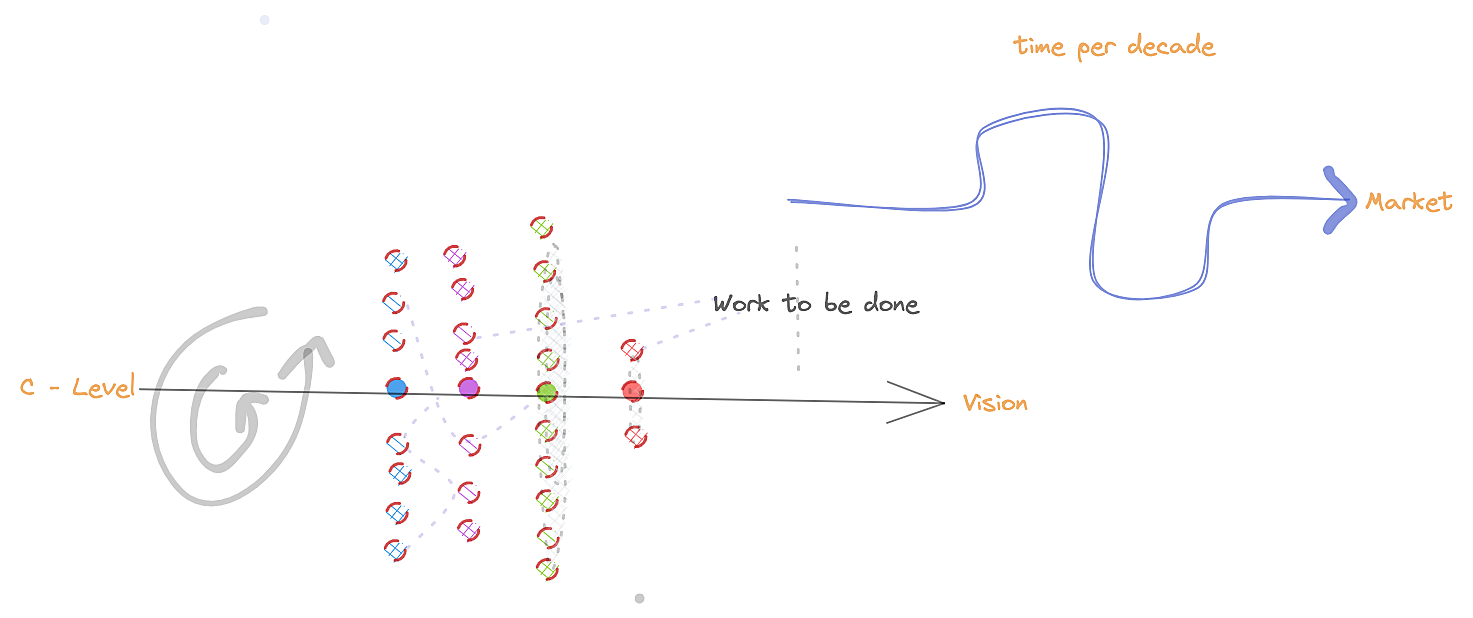Every single person in the world will want to live a better life as they leave the planet than with the life they were born. After the world adopted the currency culture, it incentivizes every person to build and make almost anything that makes the world better.
- If person A sings a song and person B enjoys it, the currency culture allows person B to pay Rs. X to person A. Both of them have made their lives better.
It is easy to imagine if the people on both sides of the transaction are the individuals. For instance, we know that person A is happy because they got paid for music service delivered. Likewise, person B is pleased because they enjoyed the music service delivered.
Organizations and cultures
Singing a song is a straightforward example to understand. The owner of quality, delivery, and happiness of the user is the singer. But in reality, the participants of this currency culture are the whole world. The world as a whole uses a product like Gmail. It takes a couple of teams under a label called Google to deliver a product like Gmail. Unlike a single person, multiple individuals will need to operate in a certain way to own Gmail's product quality, delivery, and happiness.
Manu Cornet has prepared a comic that went wildly viral in the early days. Even Sathya Nadella, Microsoft, wrote about it in his biography.
"A cartoonist drew the Microsoft organization chart as warring gangs, each pointing a gun at another. The humorist's message was impossible to ignore [...] I told employees that renewing our company's Culture would be my highest priority." -- Satya Nadella, "Hit Refresh," page 1.
- By looking at the above picture, you can probably guess what each company's organizational structure might be. It is not perfect. But it makes a strong point.
- All those companies deem to be successful. Whatever the success means for each of those, they achieved it in different ways. All product, marketing, sales, engineering, and support teams work like that to achieve success.
There is nothing wrong with how those companies are organizing their teams except that there's nothing right either. But if everyone wants to live a better life, both customers and companies, the way companies manage themselves is critical.
- Employee wants to feel purposeful, learning, and resourceful. At the same time, quality of life beyond work time.
- Customer wants experiences those meet their expectations and the product they use just works as promised.
- The Org needs to generate enough cash flow to sustain the teams and pivot when the market demands.
But sadly, any decent company will be considered successful if they meet #3 of the above criteria. That's enough.
I set out to put a thought experiment that drives #3 on the foundations of #1 and #2.
It turned out to be the megaphone cone culture.
I set out to put a thought experiment that drives #3 on the foundations of #1 and #2.
It turned out to be the megaphone cone culture.
The Megaphone-Cone Culture
In reality, there is no such word called "megaphone-cone." I invented it for the sake of this article.
- Not very often, we wear the hat of an employer or a founder. For the sake of this thought experiment, we wear it.
- Every founder's primary job is to improve the predictability of their position in the market. No matter how many vision statements they make, the company will fall by the market rules. The trick is to make the vision cohesive to the market demand.
- The C Level executives like CEO, CMO, CPO, CRO, CHRO all stand near the megaphone's right end. They set out to build a message that will inspire the rest of the organization to stay closer to the vision.
- The rest of the organization staying closer to the organization is lead by middle management. We usually know them by "Managers."
- Any skilled employee might have to tend to translate their work to abide by the vision.
- A Data Engineer at Google would contribute to "organize the world's information" by cleaning and finding patterns in the data to be fed into systems. Data Engineers enjoy playing with data.
- A Finance executive at Google would contribute to "organize the world's information" by making it all possible for the rest of the employees to not worry about their salaries. Finance executives enjoy playing with numbers and ensuring accounts.
- An HR executive at Google would contribute to "organizing the world's information" by ensuring they hire the right talent. Similarly, HR may enjoy building people experiences.
Well, that's it. My first thought experiment has got me this far. It doesn't matter vision evolves or not. The mission that each team undertakes will align with the vision of the company. Eventually, message it in a way that the market accepts it.
Well, not yet
While there are "inside the building" problems, those exist even in the megaphone-code Culture, just like any other company we've seen in the above comic; one thing most bothered me.
Every employee takes tasks from the middle management but never has access to the look at the market. They are hardly able to translate their contributions to vision. So every single time, the employee cannot carry their thought process beyond some of their smaller "cones." To channel smaller cones to more prominent megaphone companies, use frameworks like OKRs in a scalable way.
Yet, it still bothers me as the level of friction for an employee to start thinking about the market wants and devise their work in ways that fit vision/market is so much that it takes years.
I continued my thought experiment and ended up thinking of - The Curl-Hand Culture.
The Curl Hand Culture
Arriving in this Culture made me happy.
- As you can probably guess, all the C-Level employees (solid balls in the diagram) must be on the vision arrow line.
- Around them will be members of their business unit revolving around the vision arrow. The advantage is, every member can have varying radius lengths towards the vision.
- The lesser the radius, the greater and accurate the work decisions that are closer to the vision. The result is a culture where employees are accountable to each other, aligning with the vision.
- When markets are dynamic, each individual can pivot quickly without having the entire cone react and drive action.
Nevertheless, every Culture is a tribe on its own and behaves comfortably. Bringing a shift in Culture is very hard. But it is the single best investment for ever-flourishing companies.
Thought experiments are a fun exercise I often practice. I hope you enjoyed reading this. Thank you.


